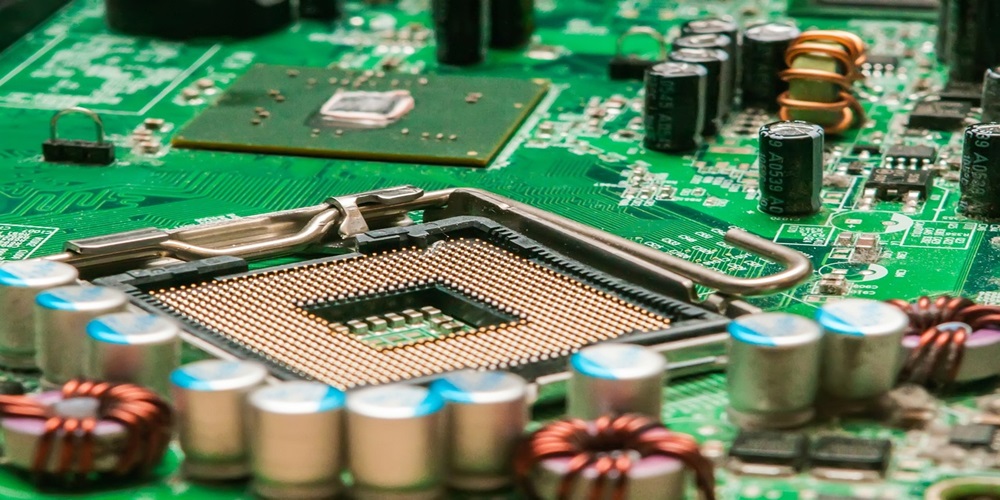In an age where technology evolves at breakneck speed, few companies have played a more pivotal role in shaping the landscape than Intel. From revolutionizing personal computing with microprocessors to driving advancements in artificial intelligence and cloud computing, Intel’s influence is as profound as it is far-reaching. But what exactly lies beneath this semiconductor giant’s shiny surface? How has its innovation impacted not only tech giants but also the everyday lives of millions around the globe? Join us as we delve into the fascinating journey of Intel—a beacon of progress that has continually redefined our relationship with technology and set the stage for future innovations. Buckle up; it’s time to explore how one company shaped an entire industry!
Introduction to Intel and its Impact on the Tech Industry
In the ever-evolving tech landscape, few names resonate as powerfully as Intel. From humble beginnings to becoming a global powerhouse, Intel has played an instrumental role in shaping how we interact with technology today. This chipmaker revolutionized industries and changed lives by making computing accessible to millions. As we dive deeper into the influence of Intel in shaping the tech landscape, we’ll explore its rich history and groundbreaking innovations that have left an indelible mark on our digital world. Buckle up; it’s time to discover how one company transformed the way we live, work, and connect!
A Brief History of Intel: From Microchips to New Technologies
Intel started its journey in 1968, founded by Robert Noyce and Gordon Moore. Initially focused on memory chips, the company quickly pivoted to microprocessors—a decision that would change everything.
The introduction of the Intel 4004 in 1971 marked a breakthrough. It was the first commercially available microprocessor, setting a new standard for computing power. This innovation paved the way for personal computers.
Throughout the years, Intel continued to innovate with processors like the Pentium series in the ’90s. These advancements fueled not only PCs but also various technological applications across industries.
Entering the 21st century, Intel embraced emerging technologies such as artificial intelligence and cloud computing. Their commitment to research has kept them at the forefront of tech evolution—shaping how we experience technology today.
The Rise of Personal Computers and Intel’s Role in the Market
The personal computer revolution transformed how we interact with technology. At the heart of this transformation was Intel, whose microprocessors powered a new wave of computing.
In the late 1970s and early 1980s, Intel introduced its groundbreaking x86 architecture. This innovation made it possible for PCs to run complex applications that were previously reserved for expensive mainframes.
Companies like IBM quickly recognized Intel’s potential. By choosing their processors, they set a standard in the industry that led to widespread adoption among consumers and businesses alike.
As home computers surged in popularity, so did demand for more processing power. Intel responded by continually refining its chips, ensuring users experienced faster speeds and greater efficiency.
This commitment to innovation helped establish Intel as a leader in the market. Their influence shaped not just hardware but also software development, enabling creators to push boundaries further than ever before.
Breaking Barriers: How Intel Helped Advance Technology
Intel has always been at the forefront of technological advancement. Its commitment to innovation has led to breakthroughs that reshape entire industries.
One significant contribution is the development of multi-core processors. This leap allowed devices to handle more tasks simultaneously, enhancing efficiency and performance across various applications.
Additionally, Intel played a pivotal role in promoting open standards. By encouraging compatibility among hardware and software, they made technology accessible for everyone—from hobbyists to large enterprises.
The introduction of integrated graphics also changed how we interact with computers. Users can now enjoy high-quality visuals without needing separate graphic cards.
Moreover, Intel’s investments in artificial intelligence (AI) have paved new pathways for machine learning capabilities. This focus on smart technologies has positioned them as leaders in shaping future innovations across sectors like healthcare, automotive, and beyond.
The Legacy of Innovation: Notable Products and Technologies by Intel
Intel has consistently pushed the boundaries of technology since its inception. One standout moment came with the introduction of the 4004 microprocessor in 1971, which revolutionized computing by packing processing power into a compact chip.
Following that, the x86 architecture became a foundational element for personal computers. This innovation set standards that are still relevant today, enabling software developers to create applications across various platforms.
The Pentium series further solidified Intel’s position in tech history. These processors not only enhanced performance but also introduced features like integrated floating-point units.
More recently, advancements in AI and machine learning have led to products like Intel’s Xeon Scalable processors. Such technologies enable vast data handling capabilities essential for modern enterprises.
Each product reflects Intel’s commitment to innovation and adapting to changing technological landscapes, ensuring its legacy endures through generations.
Challenges Faced by Intel and How They Overcame Them
Intel has faced numerous challenges throughout its storied history. Competition from other chip manufacturers, like AMD and NVIDIA, posed significant threats to its market dominance. Each innovation cycle brought new players eager to capture a share of the lucrative semiconductor market.
The transition to smaller manufacturing processes was another hurdle. As technology advanced, Intel struggled with delays in delivering next-generation chips. This prompted concerns among investors and consumers alike.
However, resilience became Intel’s hallmark. The company invested heavily in research and development while optimizing production techniques. Strategic partnerships also played a crucial role in overcoming these obstacles.
By fostering collaboration within the industry, Intel not only navigated challenges but also kept pushing boundaries for performance improvements. Its ability to adapt has solidified its position as a leader in the tech landscape despite setbacks along the way.
Current Dominance in the Chip Market and Future Predictions for Intel
Intel remains a powerhouse in the chip market, consistently pushing boundaries with its innovative designs. The company has established itself as a leader in semiconductor manufacturing, supplying processors for everything from personal computers to cloud servers.
Recent advancements have seen Intel pivot towards AI and machine learning technologies. This focus not only enhances performance but also keeps them competitive against emerging rivals like AMD and Nvidia.
Looking ahead, predictions suggest that Intel will continue to dominate by bolstering its R&D efforts. New architectures could revolutionize processing power while addressing energy efficiency concerns.
Additionally, partnerships with tech giants are likely to expand their influence across various sectors. As they adapt to changing demands, Intel’s commitment to innovation may well secure its position at the forefront of technology development for years to come.
Partnership and Collaboration: How Intel has Shaped the Tech Landscape through Strategic Alliances
Intel has long understood the power of collaboration. Strategic partnerships have allowed it to push boundaries and innovate in ways that would be challenging alone.
Working alongside companies like Microsoft, Intel helped define the personal computing era. Together, they created an ecosystem where hardware and software thrived simultaneously.
Moreover, relationships with telecommunications firms propelled advancements in mobile technology. This synergy sparked innovations that changed how we connect daily.
By joining forces with startups and research institutions, Intel nurtured emerging technologies like artificial intelligence and quantum computing. These alliances ensure a steady stream of fresh ideas while bolstering its competitive edge.
The collaborative spirit fosters not just growth but also resilience against industry shifts. Through these strategic ties, Intel continues to play a pivotal role in shaping the tech landscape for years to come.
Conclusion
It is undeniable that Intel has had a tremendous influence in shaping the tech landscape as we know it today. From their innovative breakthroughs in microprocessor technology to their resilient business strategies, Intel has consistently pushed the boundaries and set new standards for excellence in the tech industry. As we continue to witness advancements and developments in this ever-evolving field, it is clear that Intel will remain a key player and continue to shape the future of technology.

































